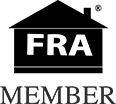Julian Construction.com: Stabilizing Foundations with Helical Piles
Helical piers, also known as helical piles, screw piles and helical anchors, help secure new foundations to the ground. They can also be used to strengthen and stabilize existing foundations. The word “helix” means having a spiral shape. A pile or pier is a long column, shaped like a screw, which is driven into the ground.

A foundation spreads the weight of the building that sits on it. Sometimes the foundation itself needs support. This is usually due to poor soil conditions and moisture issues, which can cause uneven settlement, cracking and bowing.
Helical piles can give the foundation additional strength and stability. They are attached to the foundation on one end, and then screwed (anchored) into the ground on the other. The depth that they are driven into the ground typically depends on the extent of the load.
Helical piers are usually installed around the perimeter of the foundation. First, brackets are attached to the foundation. Then the pier is screwed into the soil and attached to the bracket. Site disturbance is usually minimal. In fact, when a home is being retrofitted with piers, in many cases it can still be occupied while the work is being completed.
Screw piles have been used in construction for almost 200 years, beginning with lighthouse foundations in the 1800s. They were also used to build piers.
Today’s helical piles look like large screws made of galvanized or epoxy-coated steel. They have a central shaft with one or more spiral-shaped plates. The plates are typically referred to as blades or flights, and are welded to the central shaft. There are also extension shafts, which are used to increase the length of the shaft and help it achieve the right depth.
There are many advantages to using helical piles to support a foundation. With the right equipment, they can be installed fairly quickly. Many times it only takes a few minutes to position and place a pile. They can also be loaded as soon as they’ve been installed. The load capacity can even increase over time. Helical piles can be used in many different types of soils, including dense sand, loose sand, soft clay and hard clay.
The stability of your home depends on having a strong foundation. Helical piles are one way to increase foundation support. Other types of foundation repair methods include concrete piers and pilings, masonry patches and sealants, slabjacking and bracing.
Is your floor sloping? Are you finding it difficult to open and close windows? Can you see cracks in walls? These are some of the many signs of foundation problems.
If you know or suspect that your foundation is damaged in some way, contact a foundation contractor to find out what type of repair is needed. Both your property and foundation will be thoroughly inspected, and any problem areas addressed. Not only will you find out what foundation repair solutions will work the best, an experienced foundation repair professional can also show you how to prevent problems in the future.
Julian De La Torre, expert in Los Angeles foundation inspection, repair & house bolting (Los Angeles) and founder of Julian Construction (www.julianconstruction.com) in Los Angeles, has inspected over 15,000 structures, working with engineering firms & local departments of building & safety. The company has done more home foundation repair (Los Angeles) than any other company in the area over the last five years (//losangelesfoundationrepair.us/). Julian Construction owns its own company and is a “no middlemen” model–no salesmen or subcontractors–you get the principals of the company & its workers under your home.
See their video:





